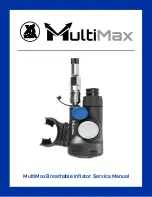
Keysight N774xC Series Multiport Power Meter Programming Guide
13
Introduction to Programming
1
The characters between angled brackets (
<
...
>
) indicate the kind of data
that you should send, or that you get in a response. You do not type the
angled brackets in the actual message.
Descriptions of these items follow the syntax description. The following
types of data are most commonly used:
Other kinds of data are described as required.
The characters between square brackets ([...]) show optional information
that you can include with the message.
The bar (
|
) shows an either-or choice of data, for example,
a
|
b
means either
a
or
b
, but not both simultaneously.
Extra spaces are ignored, so spaces can be inserted to improve readability.
Units
Where units are given with a command, usually only the base units are
specified. The full sets of units are given in the table below.
Table 2
Units and allowed Mnemonics
string
is ascii data. A string is contained between double quotes ("...") or single quotes (‘...’).
value
is numeric data in integer (12), decimal (34.5) or exponential format (67.8E-9).
wsp
is a white space.
Unit
Default
Allowed Mnemonics
meters
M
PM, NM, UM, MM, M
decibel
DB
MDB, DB
second
S
NS, US, MS, S
decibel/1mW
DBM
MDBM, DBM
Hertz
HZ
HZ, KHZ, MHZ, GHZ, THZ
Watt
Watt
PW, NW, UW, MW, Watt
meters per second
M/S
NM/S, UM/S, MM/S, M/S














































